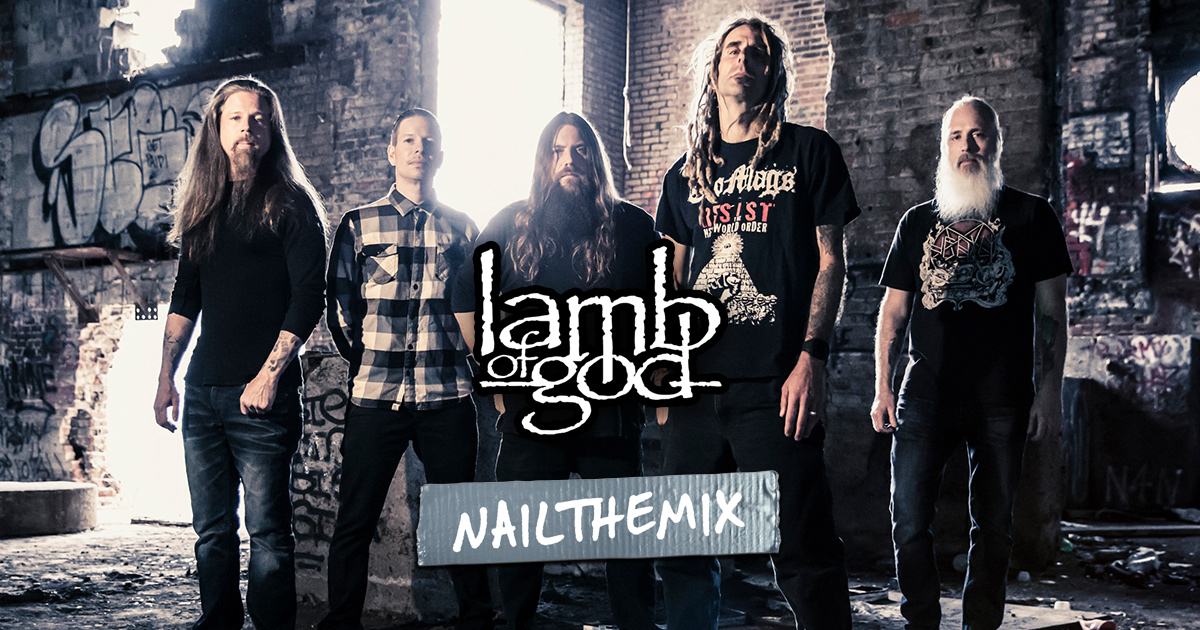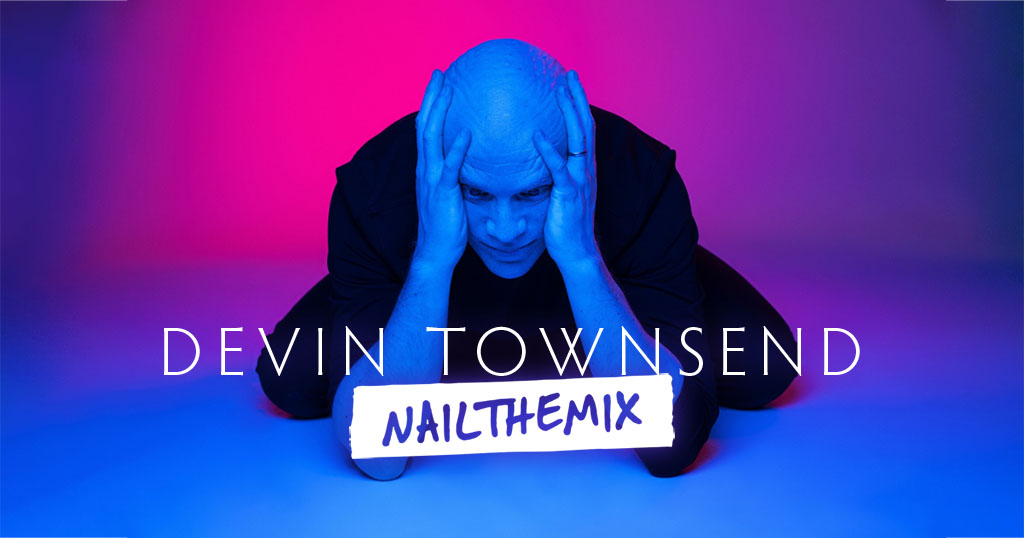
# Mixing Jinjer’s Snare: Max Morton’s Amp Sim & Distortion Tricks
Nail The Mix Staff
Getting a snare drum to have both a killer crack and a long, powerful sustain can be a pain. You want energy and a fat tail, but adding a ton of reverb can wash things out and push the snare back in the mix. So, what’s the alternative?
Enter parallel distortion. It’s a classic trick for adding grit and size to almost anything, and in a recent Nail The Mix session, producer Max Morton (Jinjer, Shokran) showed us exactly how he uses it to beef up a snare. He even got experimental and threw a guitar amp sim on it to sculpt the perfect aggressive tone. Let’s break down how you can use this technique to add sustain and character to your own snare tracks.
The Problem: A Spiky, Short Snare
Max started with a raw snare track that, while punchy, was very “spiky” and short. It had a great initial transient that worked with the overheads, but it lacked the body and sustain needed to feel huge in a dense metal mix like Jinjer’s. The goal was to add a fat, sustained tail and some aggressive character without losing the initial crack.
Compounding the issue was the cymbal bleed in the snare mic. When you start compressing and distorting a track, that bleed comes right up with it, which can create a washy, messy sound if you’re not careful.
The Solution: Parallel Distortion for Sustain and Grit
Instead of reaching for reverb, Max’s move was to create a parallel distortion channel. This allows you to blend a heavily processed signal in underneath the clean, transient-heavy main snare, giving you the best of both worlds.
The setup is simple: duplicate your main snare track and slap a distortion plugin on the copy. We’ll call it “Snare Distortion.”
Pre-Distortion EQ: The Key Move
Before even thinking about distortion, Max’s first step is critical: he adds a high-pass filter. Placing an EQ before your distortion is a pro move. By cutting out the unnecessary low-end rumble before it hits the distortion, you prevent the effect from turning into a flabby, undefined mess. This focuses all the saturation and aggression on the midrange and top end, which is where the snare’s smack and sizzle live. It keeps the distortion tight and controlled.
Choosing Your Weapon: Decapitator vs. Amp Sim
With the track prepped, it’s time for the fun part. Max auditioned a couple of different tools for the job, each with its own vibe.
Option 1: The Go-To Distortion Plugin
Max’s first choice was the classic Soundtoys Decapitator. He cranked the drive, engaged the punishing “Punish” mode for maximum effect, and then used the built-in “High Cut” filter in its steepest mode. This roll-off on the top end helps tame the fizz and mimics the sound of a guitar cabinet, keeping the distortion from getting too harsh. The result is a thick, controlled, and aggressive smack with a nice, dirty tail.
Option 2: The Amp Sim Experiment
Just for fun, Max decided to see what would happen if he used an actual guitar amp sim. He pulled up the Archetype: Nolly plugin and dialed in a distorted tone.
This is a totally valid and creative approach, but it comes with its own considerations. Max noted that an amp sim introduces a much more complex harmonic character—all those specific frequency peaks and valleys from the cabinet impulse response (like at 2k, 3.5k, 5k, etc.) become part of your snare sound. This can be awesome, but it can also make the snare “too present” or sound too much like a guitar, potentially fighting for space in the mix. For this track, the simpler, more direct distortion from Decapitator felt more appropriate for just adding weight and dirt.
Taming the Bleed: Making It Work for You
Of course, all this processing cranks up the level of the cymbal bleed between snare hits. But Max’s philosophy is to not be afraid of bleed. In fact, if managed correctly, it can help glue the drum kit together and make it sound more natural and powerful.
He first checked the bleed in the context of the full kit—with overheads and room mics playing. In many cases, the natural sound of the cymbals in the other mics will completely mask the bleed on the snare track, especially during busy sections and tom fills.
When You Need to Control It: Using an Expander
If you find the bleed is still too much, the solution isn’t to gate it into oblivion. Instead, use an expander or a gate with a gentle touch. Max inserted a drum-focused plugin (a tool like SSL’s Drumstrip or SPL’s DrumXchanger would work) and used it as an expander.
Instead of trying to eliminate the bleed, he set the gate’s range to around -9dB or -10dB. This doesn’t silence the bleed; it just pushes it down so it’s less distracting. By using a slightly longer recovery or release time, you can get a smooth, natural-sounding tail on the snare hits while keeping the in-between sections clean. This approach to dynamic control is a core part of modern metal mixing, letting you shape sounds aggressively without making them feel robotic. You can dive deeper into these metal compression and gating secrets to get a handle on the fundamentals.
The Final Verdict: Blending for a Massive Snare
After A/B testing, Max preferred the control and simplicity of the Decapitator for this mix, but confirmed that the amp sim was also a cool and viable option. By blending this distorted, sustained signal underneath his clean snare, he achieved a final sound that had it all: the initial spiky crack, a fat and aggressive body, and a dirty, sustained tail that gave the whole performance more energy. He transformed a simple snare track into a full-on distorted smash.
These kinds of creative, out-of-the-box processing chains are what separate good mixes from great ones. Trying techniques like this is a great starting point for enhancing your own productions.
Jinjer on Nail The Mix
Max Morton mixes "On The Top"
Get the Session
But imagine watching a producer like Max Morton actually dial this in, compare the plugins, and blend the track into the full Jinjer mix, explaining every single move along the way. That’s exactly what you get with Nail The Mix. Every month, you get the real multitracks from a massive song and watch the original producer mix it from scratch. See exactly how they get those killer tones by checking out the Jinjer “Pisces” session with Max Morton.
Want to go even deeper and discover more frameworks for creating pro-level mixes? Grab our free guide, Unlock Your Sound: Mixing Modern Metal Beyond Presets, and start applying these concepts to your own music today. See for yourself how the pros build their signature sounds and learn to craft your own on the NTM Jinjer session.







